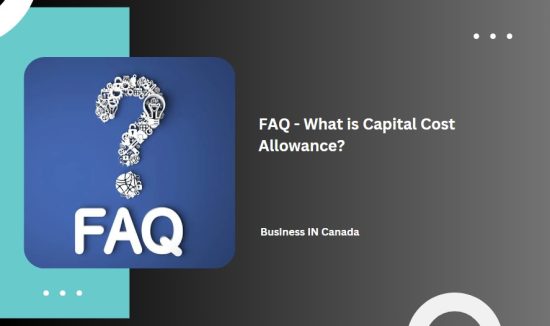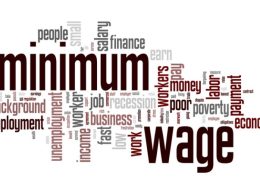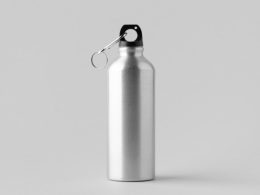Are you a business owner or a self-employed individual in Canada? Then you may be familiar with Capital Cost Allowance (CCA). If not, don’t worry! CCA is an important tax deduction that can save you money. In this blog post, we will dive into what CCA is and how it works and answer some commonly asked questions about this tax deduction.
What is Capital Cost Allowance?

Capital Cost Allowance (CCA) is a tax deduction that allows businesses and self-employed individuals in Canada to recover the cost of assets used for income-generating purposes. This deduction can help reduce your taxable income, which means you pay less tax. To put it simply, CCA is the depreciation of fixed assets over time. Fixed assets include buildings, machinery, equipment, computers, furniture and vehicles, which are not intended for resale or inventory.
The amount of CCA you can claim each year depends on several factors, such as the type of asset purchased and how much it costs. The Canada Revenue Agency (CRA) has set out specific classes under which different types of capital property fall.
It’s important to note that claiming CCA doesn’t mean getting back all the money spent on purchasing an asset in one go; rather, it means spreading out that cost over a number of years so that its value can be written down gradually over time.
How Capital Cost Allowance Works?
Capital Cost Allowance (CCA) is a tax deduction available to Canadian businesses and individuals who own capital assets used for income-earning purposes. The CCA allows you to claim the depreciation of your asset over time, reducing your taxable income. The amount of CCA you can claim depends on the class of asset you own and its original cost or adjusted cost base. Each class has its rate at which it can be depreciated for tax purposes.
When calculating your CCA, there are a few rules to remember. First, you must determine the undepreciated capital cost (UCC) of all eligible assets at the beginning and end of each year. This will give you an accurate picture of how much depreciation or CCA is applicable each year.
It’s also important to note that claiming too much CCA could result in recapture – meaning any future sale proceeds would be taxed at a higher rate than they otherwise would have been if less had been claimed originally. Understanding how Capital Cost Allowance works can be complex but beneficial for maximizing tax deductions while owning business property.
Types of Capital Cost Allowance

In Canada, businesses and individuals can claim three types of Capital Cost Allowance (CCA). The first type is the straight-line method which allows for a constant amount to be claimed each year until the asset’s value is fully depreciated. This method is commonly used for assets with a long lifespan, such as buildings.
The second type of CCA is the declining balance method, which offers a higher allowance in early years and lower deductions in later years. This method reflects the reality that most assets lose their value more quickly at the beginning of their useful lives. It is common for assets like equipment and machinery.
There’s an accelerated CCA which provides greater tax benefits by allowing larger deductions upfront before reducing them over time. The goal here is typically to encourage investment in certain sectors or industries by offering favourable tax treatment.
Each type has advantages and disadvantages depending on your financial goals and situation, so it’s important to consult an accountant or tax professional when deciding which one best suits your needs.
What Are the Benefits of the Capital Cost Allowance?
A tax deduction known as the Capital Cost Allowance (CCA) enables firms to recoup the cost of specific assets throughout the course of those assets’ useful lives. Claiming CCA has several benefits, including reducing taxable income and increasing cash flow.
One benefit of claiming CCA is that it reduces taxable income, which can result in significant tax savings for businesses. By deducting the cost of eligible assets over time, companies can lower their overall tax liability and free up more funds to reinvest in their small business.
Another advantage of CCA is that it helps increase cash flow by providing immediate deductions for capital expenditures rather than waiting until the asset has been fully depreciated. This means companies can recover some costs upfront and use those funds to finance other aspects of their operation.
In addition, claiming CCA may also help improve a business’s financial ratios by lowering its net book value and improving its return on investment metrics. This can be beneficial when seeking financing or attracting potential investors who want to see strong financial performance indicators.
There are many benefits to utilizing the Capital Cost Allowance when filing taxes as a Canadian business owner. It provides an opportunity for significant tax savings while freeing up cash flow for further investment into operations or expansion efforts.
Who Can Claim the Capital Cost Allowance?

The Capital Cost Allowance is a tax deduction that is available to anyone who owns rental property with a limited lifespan, such as buildings, equipment or vehicles. This includes both individuals and businesses.
If you are an individual who owns rental properties, you can claim the CCA on any eligible assets within those properties. However, it’s important to note that if you claim the CCA on a rental property, you will reduce its future resale value by decreasing its adjusted cost basis.
For businesses, claiming the CCA can help reduce their taxable income, which in turn lowers their overall tax bill. The amount of CCA that can be claimed varies depending on the type of asset being depreciated and how long it has been owned. In some cases, corporations may be required to pay Alternative Minimum Tax (AMT) which limits their ability to claim certain types of deductions, including the Capital Cost Allowance.
It’s worth noting that while anyone can technically claim the CCA for eligible assets they own, it’s important to understand how doing so could impact your finances in both the short and long term. It’s always recommended to consult with a tax professional before making any major decisions regarding your taxes.
Capital Cost Allowance Vs Depreciation
Capital Cost Allowance (CCA) and Depreciation are two common methods used to calculate the decline in the value of assets over time. While both methods achieve the same goal, they differ in how they handle taxation. Depreciation is an accounting method that reduces the value of an asset on a company’s balance sheet over its useful life. The expense is recorded each year on the income statement and reduces taxable income accordingly.
On the other hand, CCA is a tax deduction that allows business owners to write off capital expenses over several years via annual deductions from their taxable income. Unlike depreciation, CCA rates are fixed by CRA for different categories of assets and cannot be accelerated or slowed down at will.
Another key difference between CCA and Depreciation is that while depreciation applies only to property purchased after 1988, CCA can be applied retroactively to any eligible property acquired since 1972.
Both CCA and Depreciation offer business owners distinct advantages when it comes to calculating asset wear-and-tear for tax purposes. Choosing which method suits your needs best depends on various factors such as cash flow requirements, industry standards or personal preferences.
What is the Capital Cost Allowance on Rental Property?

When it comes to rental properties, Capital Cost Allowance (CCA) is an essential tax deduction that can help landlords save money. CCA refers to the depreciation of assets used in a rental property over time. This applies to items like furniture, appliances, and even the structure itself.
The amount of CCA you can claim on your rental property depends on its class. The Canada Revenue Agency (CRA) has different classes for different types of buildings, ranging from 1-6%. For example, residential buildings fall under Class 1 and have a CCA rate of 4%.
It’s important to note that claiming CCA will reduce your overall taxable income but could also impact the eventual sale of your property. When you sell your rental property, any claimed CCA will be added back into your income as recaptured capital cost allowance (RCCA).
Understanding the rules around claiming CCA on a rental property can be complex, but seeking professional tax advice can ensure you’re maximizing all available deductions while minimizing any potential negative impacts down the line.
How Do You Determine the Capital Cost Allowance for Vehicles?
When it comes to claiming the Capital Cost Allowance (CCA) for vehicles, there are a few things that you need to keep in mind. The CCA rate depends on your vehicle type and its original cost.
For passenger vehicles, which include cars, SUVs and vans designed to carry less than ten passengers, the CCA is limited to a maximum of $30,000 plus applicable federal and provincial sales taxes. The current CCA rate for these types of vehicles is 30%.
On the other hand, if you own a heavier vehicle like a truck or van designed to carry more than ten passengers or used primarily for hauling goods or equipment, you can claim up to $55,000 plus applicable taxes with a CCA rate of 30%.
It’s important to note that if your vehicle was not exclusively used for business purposes during the taxation year in question, then only the portion related to business use can be claimed under CCA. To accurately determine your capital cost allowance deduction amount, ensure that all necessary documentation, including receipts and mileage logs, are kept as proof. This will help avoid any confusion when filing your tax returns at year-end.
Determining your capital cost allowance for vehicles involves taking into account factors such as original cost and type of vehicle owned. Keep detailed records so that accurate calculations can be made at tax time.
Conclusion
In wrapping up our discussion on Capital Cost Allowance (CCA), it’s important to remember that this tax deduction is a valuable tool for businesses and individuals who own depreciable assets in Canada. By claiming CCA, taxpayers can reduce their taxable income, which ultimately leads to lower taxes owed to the government. However, it’s essential to understand the rules and regulations surrounding CCA before claiming it.
When determining whether or not to claim CCA, consider factors such as the type of asset you own, its useful life and salvage value, and any available deductions or credits. Always consult an accountant or tax professional if you’re unsure how to proceed.
While some limitations and restrictions are associated with CCA claims, taking advantage of this tax deduction can result in significant savings over time. With proper planning and execution, businesses and individuals alike can use CCA as a powerful financial tool for managing their taxable income in Canada.
FAQ – What is Capital Cost Allowance?

Does CCA reduce taxable income?
Capital Cost Allowance (CCA) is a tax deduction that reduces the taxable income of Canadian businesses and individuals who own assets used for business purposes. The CCA amount can be claimed each year until the cost of an asset has been fully recovered.
Claiming CCA on an asset reduces taxable income, but it’s important to note that it doesn’t mean you won’t pay any taxes. Instead, claiming CCA means that the amount of tax owed will be reduced by the corresponding percentage of the CCA rate assigned to your specific type of asset.
What is the 1 2 year rule for CCA CRA?
The 1 2 year rule for CCA CRA refers to the Capital Cost Allowance (CCA) rules set by the Canada Revenue Agency (CRA). These rules state that an asset must be owned and available for use before it can be eligible for CCA.
Under this rule, assets acquired in a taxation year are considered to have been acquired at their half-year point. This means that only half of the asset’s cost can be claimed as CCA in the first year of ownership. In subsequent years, the full amount can be claimed.
For example, if you purchase a piece of equipment worth $10,000 on July 1st, it will be considered to have been purchased at its mid-point on December 31st. Therefore, only $5,000 ($10,000/2) is eligible for CCA in the first year of ownership. It is important to note that not all assets are subject to this rule. Real estate assets and certain types of machinery and equipment may qualify for different treatment under CCA rules.
Understanding these rules is essential when calculating your tax liabilities and ensuring compliance with CRA regulations.
What is the first year CCA rule?
The first-year CCA rule is an important aspect of the Capital Cost Allowance that taxpayers need to know about. It determines how much depreciation can be claimed in the first year a capital asset is acquired and put to use in business operations. Under this rule, only half of the usual CCA rate can be claimed for assets purchased and used during the first taxation year. For example, if an asset has a 30% CCA rate, then only 15% can be claimed in its first year of use.
However, there are certain exceptions to this rule. If an asset was bought near the end of a tax year or was not used for at least half of it due to unforeseen circumstances, then full-year CCA rates may still apply.
It’s essential to keep accurate records when claiming your CCA deductions, as incorrect calculations could lead to penalties from Canada Revenue Agency (CRA). Knowing and understanding these rules will help you maximize your deductions while avoiding any potential issues with CRA audits.
When should you not claim CCA?
Claiming Capital Cost Allowance (CCA) is an effective way to reduce your taxable income, but there are certain situations where it may not be beneficial to claim it. One such situation is when you anticipate selling the asset in the near future.
If you sell a depreciable asset for more than its undepreciated capital cost (UCC), you will have to pay back some of the tax savings that were obtained through CCA. This could potentially leave you worse off financially than if you had not claimed any CCA at all.
Another scenario where claiming CCA may not be advantageous is when your business has minimal profit or operates at a loss. Since CCA reduces taxable income, if there isn’t much income, to begin with, claiming CCA won’t provide significant tax savings.
It’s also important to note that some assets, such as land and goodwill, are ineligible for CCA claims. In these cases, attempting to claim CCA for them would result in disallowed expenses and potential penalties from Canada Revenue Agency (CRA).
Before making a decision on whether or not to claim capital cost allowance on an asset, consider factors such as the likelihood of selling the asset in the near future and your business’s profitability. Additionally, ensure that only eligible assets are being claimed for depreciation purposes.
Can I claim CCA on my personal vehicle?
The answer is no unless it’s being used primarily for business purposes. Personal-use vehicles do not qualify for CCA deductions. While navigating through tax laws and regulations might seem daunting at first, understanding how to claim CCA properly can ultimately lead to substantial savings come tax time.










